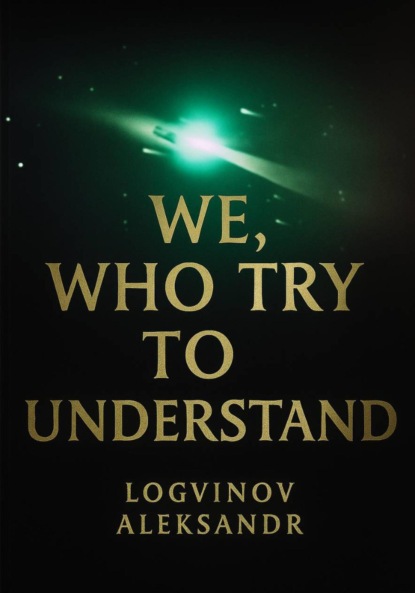We, Who Try to Understand

- -
- 100%
- +

Prologue
Humanity has always strived to comprehend the unknown. Yet, the attempt to establish contact with an extraterrestrial intelligence—one whose consciousness differs radically from ours—poses a truly unprecedented challenge. This task lies at the intersection of many disciplines: science, philosophy, linguistics, ethics. The usual approach—treating an alien interlocutor as a human being who merely speaks another language—does not work. For we are not dealing with another species merely, but with a mind that may operate through entirely different categories.
Between the human mind and the alien consciousness stretches a deep chasm of incomprehension. Before attempting to bridge it, we must recognize its full depth. We are separated not by kilometers of space, but by fundamental differences in perception, cognition, and experience. How can one throw a thread of communication toward a being whose reality is built upon other foundations? What bridges of understanding can be erected over the abyss dividing two intelligences?
In this reflection—structured as a series of connected chapters—we shall explore the limits of our perception and imagination, the problem of anthropomorphism (Anthropomorphism, from Greek anthropos—“human” and morphe—“form,” means the projection of human traits onto objects, animals, plants, natural phenomena, supernatural beings, or abstract concepts), bold ideas for creating a new language at the intersection of two minds, possible forms of alien consciousness, the risks and ethical dilemmas of contact, and the role of science, art, and philosophy as universal bridges to understanding. This is not a narrative about heroes and events, but a conceptual journey of the mind. Its goal is not to give final answers but to pose questions and imagine that moment when two minds in the universe might first attempt to say to each other: “I am. And you?”
Chapter 1. The Limits of Human Perception
Every living species perceives the world in its own way, and humans are no exception. Our senses open only a narrow window into reality. We hear sound only within a limited range of frequencies, see only the visible spectrum of light, and feel touch only through direct contact. Everything beyond these ranges remains invisible to us—until we invent tools to peer behind the curtain. Even now, we are surrounded by signals and fields we do not notice: ultrasound, ultraviolet glow, Earth’s magnetic fields. For us, they do not exist directly, though instruments reveal a world teeming with invisible colors.
Now imagine a sentient being whose sensory experience of the world is completely different. Its senses may directly perceive aspects of the universe inaccessible to humans—magnetic fields, subtle gravitational vibrations, or ranges of light we can only guess at. What for us is mere background noise might be their primary information channel. Their “worldview” is built on different data: they might see the electromagnetic architecture of space or hear the radioactive decay of atoms as music. Their reality is another layer of the universe, superimposed upon ours yet invisible to us without mediation.
Our perception is limited not only by our senses but also by our culture and experience. We tend to think our sensations give us an objective picture of the world, yet it is only a human version of reality. There’s an old thought: if we had different senses, we would live in a different world. The limits of human perception are also the limits of our imagination. Realizing this is the first step toward understanding how different another mind’s view of the universe might be.
Chapter 2. The Trap of Anthropomorphism
Humans have a habit of endowing the unknown with familiar traits. When we think of aliens, our imagination often paints them as humanoid beings with understandable emotions and motives. It’s natural—otherwise, empathy and comprehension become difficult. But in encountering a radically alien consciousness, this projection becomes a dangerous trap. Anthropomorphism—attributing human qualities to the non-human—can lead to profound misconceptions.
Imagine we receive a signal from a distant civilization. Instinctively, we seek meaning in it—familiar rhythms, tones: perhaps it’s a “hello” or a plea for help? But if the sender’s mode of thought is entirely different, our reading between the lines will deceive us. What we send as a greeting might be interpreted as a threat or unbearable noise—and vice versa. A gesture of goodwill (say, a bright light pulse toward their planet) could be seen as aggression. Their response might seem like a natural phenomenon until we learn to distinguish intentional signals from random ones.
Конец ознакомительного фрагмента.
Текст предоставлен ООО «Литрес».
Прочитайте эту книгу целиком, купив полную легальную версию на Литрес.
Безопасно оплатить книгу можно банковской картой Visa, MasterCard, Maestro, со счета мобильного телефона, с платежного терминала, в салоне МТС или Связной, через PayPal, WebMoney, Яндекс.Деньги, QIWI Кошелек, бонусными картами или другим удобным Вам способом.







